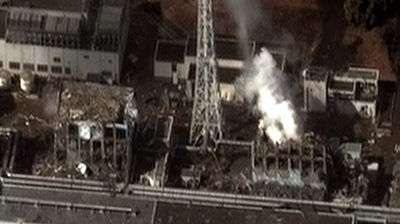Japan Atomic Energy Agency
Coordinates: 36°26′33.7″N 140°35′45.1″E / 36.442694°N 140.595861°E

The Japan Atomic Energy Agency (日本原子力研究開発機構 Nihon genshiryoku kenkyū kaihatsu kikō, JAEA) is an Independent Administrative Institution formed on October 1, 2005 by a merger of two previous semi-governmental organizations. While it inherited the activities of both PNC and JAERI, it also inherited the nickname of JAERI, "Genken" 原研, an abbreviated word for "nuclear research".
On April 10, 2007, JAEA officially joined the GNEP alliance.[2] The other members in the alliance are Areva, Washington Group International and BWX. It is expected that the experience gained from the Rokkasho centrifuge enrichment plant will be a key contribution from JAEA.
On April 1, 2016, JAEA transferred some of its laboratories to the National Institute of Radiological Sciences (NIRS), and the NIRS body was renamed to the National Institutes for Quantum and Radiological Science and Technology (QST) which includes existing laboratories of the NIRS.
Facts Overview
- Establishment: October 2005
- Founding Law: The Japan Atomic energy Agency Law (日本原子力研究開発機構法)
- Headquarters: Tokai-mura
- Permanent Staff: 4386 people as of October 2005
- Board Chairman: 岡﨑俊雄 Inaugurated January 2007
Locations and Facilities
The following is an incomplete list of its activities, sorted by location.
Tokai-mura Facilities
JAEA has several facilities located in Tōkai, Ibaraki, which was the first center in Japan for nuclear research. Currently, JAEA has expanded to several other sites in the Ibaraki Prefecture as well as all of Japan.
- Tokai R&D Center (東海研究開発センター)
- Nuclear Chemistry Research Center
- Nuclear Fuel Cycle Engineering Laboratories
- The Japan Proton Accelerator Research Complex (大強度陽子加速器計画 or J-PARC for short) houses many particle research facilities.
Tsuruga Facilities
JAEA has another head base in Tsuruga, Fukui. It is a fast breeder reactor center and a Research and Development (R&D) center.
Oarai R&D Center (大洗研究開発センター)
This center is located in Ōarai, Ibaraki, close to, but not at the same site as Tokai-mura. It houses the Jōyō reactor, the Japan Materials Testing Reactor, the new HTTR reactor, an environmental reactivity monitoring center, and a children's museum.
Ningyo-toge Environmental Engineering Center (人形峠環境技術センター)
This is a small uranium refining and conversion plant, as well as a small centrifuge enrichment demonstration plant located in Kamisaibara, Okayama. The center deals with front-end issues of the nuclear fuel cycle.[3]
Aomori R&D Center (青森研究開発センター)
The Aomori Research and Development Center is spread out over Rokkasho, Aomori and Mutsu, Aomori. The Rokkasho site does work with fusion research, notably a fusion reactor design research institute, a particle accelerator, and a materials irradiation test facility. The facilities in Mutsu include a museum, an ocean monitoring facility, and radioactive waste management.
JAEA also co-operates and provides support for the activities of Japan Nuclear Fuel Limited with their reprocessing facility and Uranium enrichment facility plans.
Horonobe Underground Research Center (幌延深地層研究センター)
The Horonobe URL carries out research and development on geoscientific study and on geological disposal for high-level radioactive waste. It is expected that this site will become Japan's national Deep geological repository for nuclear waste.
Tono Geoscience Center (東濃地科学センター)
This is located in Tōnō, in the Gifu Prefecture.
See also
- Nuclear power in Japan
- Independent Administrative Institution (IAI), 2001
- List of Independent Administrative Institutions (Japan)
- United States Department of Energy National Laboratories
- 2011 Japanese nuclear accidents
- Fukushima I nuclear accidents
- Japanese reaction to Fukushima I nuclear accidents
- Japanese nuclear incidents
References
- ↑ Tomoko Yamazaki and Shunichi Ozasa (June 27, 2011). "Fukushima Retiree Leads Anti-Nuclear Shareholders at Tepco Annual Meeting". Bloomberg.
- ↑ Nuclear Engineering International
- ↑ Nuclear power in Japan